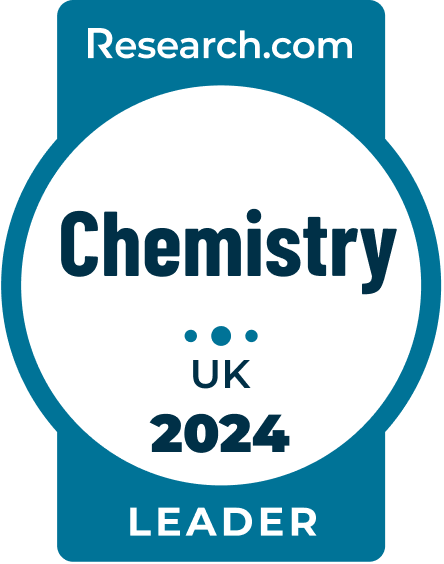News
19th December 2011
Prof. Compton gives his inaugurial lecture as Chinese Academy of Sciences Visiting Professor
Prof. Compton gave his inaugurial lecture as Chinese Academy of Sciences Visiting Professor at the CAS Institute of Physical Sciences, Science Island, Hefei, Anhui Province on December 19th. The lecture was entitled 'Electrochemistry at the Nanoscale' and attend by scientists from all over China.
Image(click to enlarge): Line 1: (from left) Jin-Huai Liu: IIM, CAS, Professor; Si-Fa Wu: HFCAS,CAS, Professor, Vice-President; Hong-Yuan Chen: Nanjing University,Academician; Richard G. Compton: Oxford University, Professor; Li-Jun Wan: Institute of Chemistry, CAS, Academician; Rui Zhao: Bureau of Basic Research, CAS; He-Hai Jiang: HFCAS, CAS, Professor
Line 2: (from left) Zhao-Xiang Deng: USTC, Professor; Wei Chen: Changchun Institute of Applied Chemistry, CAS, Professor; Xing-Hua Xia: Nanjing University, Professor; Jing-Juan Xu: Nanjing University, Professor; Jun-Jie Zhu: Nanjing University, Professor; Dong-Ping Zhan: Xiamen University, Associate Professor; Qing-Bo Meng:Institute of Physics, CAS, Professor; Xing-Jiu Huang:IIM, CAS, Professor
http://english.hf.cas.cn/
27th June 2011
Prof. Compton appointed Chinese Academy of Science Visiting Professor
Prof. Compton has been appointed appointed Chinese Academy of Science Visiting Professor at Hefei Institute of Physical Science, Anhui Province
http://english.hf.cas.cn/
15th June 2011
Prof. Compton Wins 2011 Sir George Stokes Award
Awarded for his work in translating original and fundamental insights in interfacial charge transfer mechanisms and their kinetics into innovative and robust analytical sensing protocols. His work has revolutionised the field of electroanalysis.
http://www.rsc.org/ScienceAndTechnology/Awards/SirGeorgeStokesAward/2011winner.asp
15th June 2011
Second Edition of Understanding Voltammetry Published
The power of electrochemical measurements in respect of thermodynamics, kinetics and analysis is widely recognized but the subject can be unpredictable to the novice even if they have a strong physical and chemical background, especially if they wish to pursue quantitative measurements. Accordingly, some significant experiments are perhaps wisely never attempted while the literature is sadly replete with flawed attempts at rigorous voltammetry.
This textbook considers how to go about designing, explaining and interpreting experiments centered around various forms of voltammetry (cyclic, microelectrode, hydrodynamic, and so on). The reader is assumed to have a knowledge to Masters level of physical chemistry but no exposure to electrochemistry in general, or voltammetry in particular. While the book is designed to 'stand alone', references to important research papers are given to provide an entry into the literature.
The book gives clear introductions to the theories of electron transfer and of diffusion in its early chapters. These are developed to interpret voltammetric experiments at macro-electrodes before considering microelectrode behavior. A subsequent chapter introduces convection and describes hydrodynamic electrodes. Later chapters describe the voltammetric measurement of homogeneous kinetics, the study of adsorption on electrodes and the use of voltammetry for electroanalysis.
In comparison to the first edition, two new chapters - transport via migration and nanoelectrochemistry - are added. Minor changes and updates are also made throughout the testbook to facilitate enhanced understanding and greater clarity of explanation
http://www.icpress.co.uk/chemistry/p726.html
15th June 2011
New Book: A G Stromberg - First Class Scientist, Second Class Citizen
Armin G Stromberg was arguably one of the founding fathers of the technique of stripping voltammetry frequently used in chemical analysis, yet he is virtually unheard of in Western scientific circles. He was a brilliant scientist, but due to his German ancestry he was interred in one of the NKVD GULAG camps at the outbreak of the Second World War.
This semi-biographical history presents the complete set of 74 surviving letters written by Stromberg to his wife during this period. The letters provide both historians and the interested public with a rare and unique glimpse into the everyday living conditions of inmates in one of the GULAG labour camps. The book also traces Stromberg's life following his release. More importantly, it relates how he founded the thriving Tomsk school to the wider historical context of electroanalysis in the USSR, drawing conclusions about the rate of scientific development as compared to the West and showing how 'wet analysis' remained of vital importance to industry long after equivalent measurements were made elsewhere.
Readers will also appreciate how Stromberg's invaluable contributions in the Tomsk School of Electroanalysis laid the foundations for the extensive metallurgical extraction and nuclear industries that dominated the entire Siberian region for many years. This book is a must-read for anyone interested in the life and times of an important, yet often overlooked scientist of the Second World War.
http://www.icpress.co.uk/histsci/p766.html


